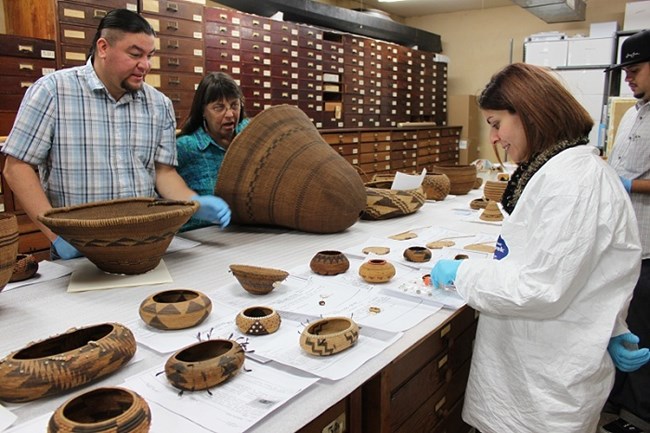
Courtesy of Museum of Us.
Federal agencies and museums, universities, state agencies, local governments, or any institution that receives Federal funds must comply with NAGPRA.
What must be done?
NAGPRA requires certain actions depending on where the Native American human remains and cultural items are located.
Protection on Federal or Tribal Lands
Federal agencies, the State of Hawai'i, Indian Tribes, and Native Hawaiian organizations must follow a process for discoveries or excavations of human remains or cultural items on Federal or Tribal lands.
On private or state land, excavations or discoveries are governed first by local or state laws, but human remains or cultural items removed from private or state land may be subject to repatriation (below), depending on who has control of them.
Repatriation by museums and Federal agencies
To facilitate repatriation, each museum and Federal agency must complete an inventory of Native American human remains and associated funerary objects and a summary of other cultural items. A museum or Federal agency must ensure that these requirements are met for any Native American human remains or cultural item under its control regardless of where the holding or collection is physically located. Each museum and Federal agency must identify one or more representatives who are responsible for carrying out these requirements.
What else must be done?
Museums and Federal agencies must:
- Consult with lineal descendants, Indian Tribes, and Native Hawaiian organizations,
- Evaluate requests for repatriation or claims for disposition of human remains or cultural items, and
- Give public notice prior to disposition or repatriation.
What if these tasks aren't completed?
Criminal prosecution may result from selling or profiting from Native American human remains or cultural items obtained in violation of NAGPRA.
Civil penalties may be assessed against a museum that fails to comply with the requirements of NAGPRA.
A Review Committee monitors and reviews implementation of NAGPRA by museums and Federal agencies.
Grants are not awarded to museums that are not complying with NAGPRA.
Last updated: October 4, 2024
